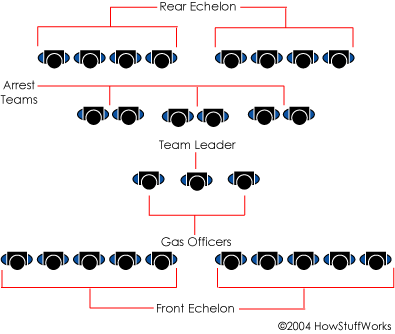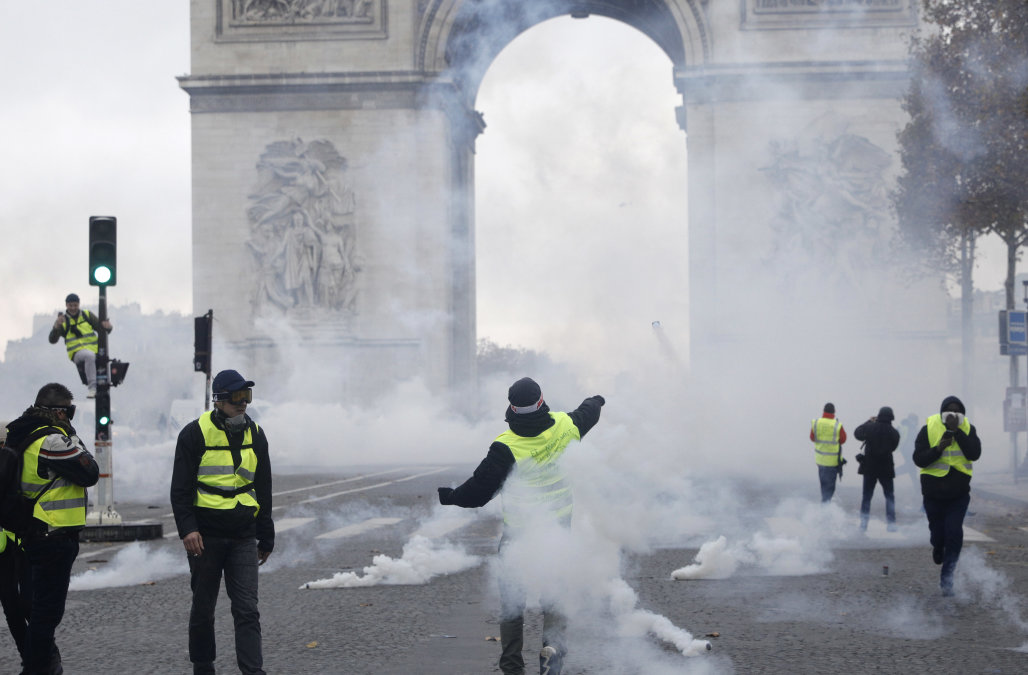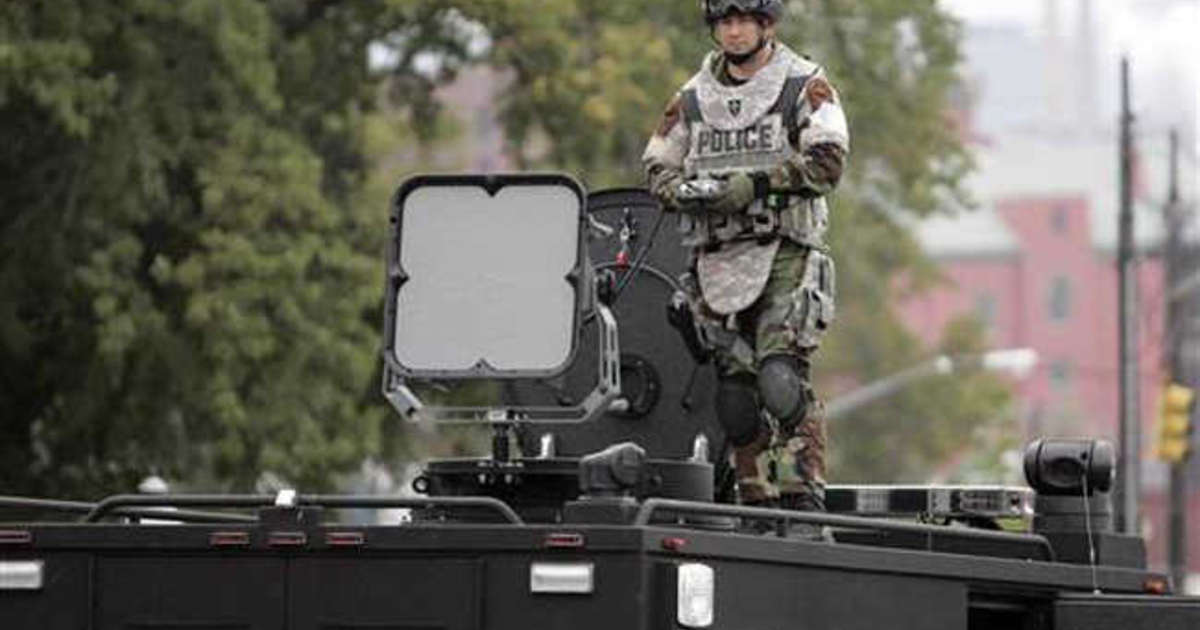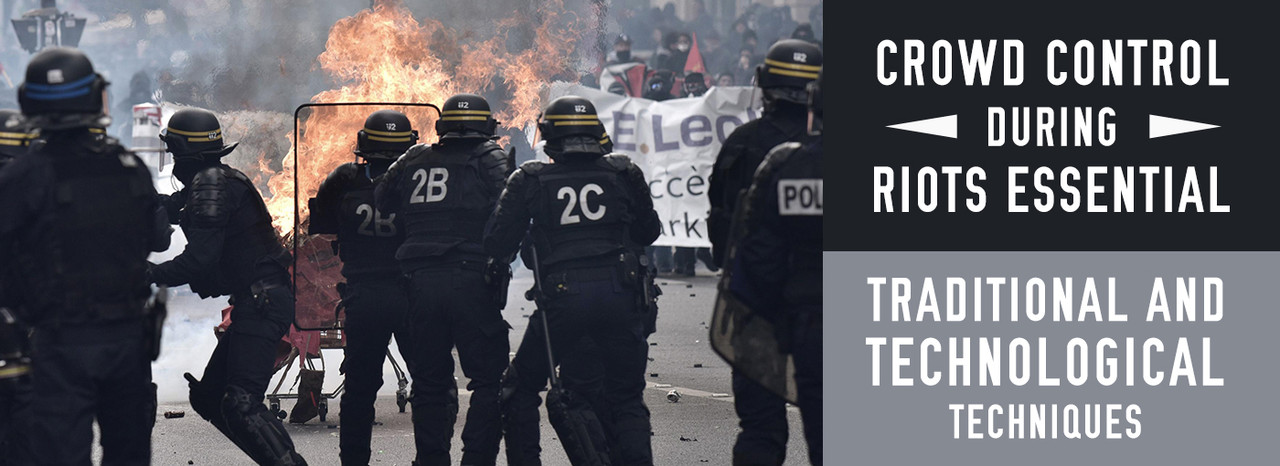Peaceful protest is an American tradition that goes back a long way. But, with every protest or peaceful demonstration, there runs the risk of individuals acting in bad faith to incite a riot. Being prepared and educated about what makes a riot happen, and how crowd control can occur safely during one is important information for anyone in event management to know.
Follow along as we take you through what makes a riot, and how riot control tactics and crowd management technology and techniques help prevent and control them.
What Makes a Riot?
Again, it’s important to remember that a peaceful gathering of people is not a riot. A riot, as defined by this helpful article, often occurs when you have two components: fuel and a spark.
Fuel is the undercurrent driving the riot. For instance, when riots have occurred in the past, they were often underpinned by racial or economic injustice. However, this isn’t always the case. Sometimes a sports team loses, and that provides enough fuel for a potential riot.
The spark is the inciting incident. It could be somebody throwing a rock or breaking a window. The individuality of the crowd gives way to a more intense and mindless grouping, where fear and often violence takes over. The transition from group of people to riot can happen so fast that many aren’t prepared for it. If you’d like to learn more about the history of rioting in the United States, here is an article to get you started.
Traditional Techniques
Police crowd control techniques and traditional riot control techniques revolve around the use of non-lethal force and well trained first responders. In the past, police officers would form a line or wall utilizing riot shields that protect from thrown projectiles, while keeping rioters at bay using batons.
Batons and non-lethal munitions are still the primary methods of riot and crowd control, but the techniques used by officers have changed dramatically.

Now, most officers and police departments use the above pictured formation to control rioting. You have a front and rear echelon, whose job is to essentially filter the crowd and find people who are causing harm. These echelons can expand or contract to allow peaceful members of the crowd to filter through to safety, and can compress when they are engaged with violent or escalated members of the crowd.
At the center, there is a team leader, usually flanked by gas officers. The leader can let the officers know when to deploy pepper spray or tear gas and their primary job is to assess the situation and command the teams to respond accordingly.
Finally, behind the leader, there is an arrest team. Their job is to fluidly engage with violent members of the crowd, restrain and process them so that the violent members of the crowd can be separated from the nonviolent members.
Of course, these methods are designed to control an intense situation, but crowd violence is unpredictable and extremely dangerous, so there is no guarantee that a given method will work. This is where technology has come into the picture, resulting in a number of technological innovations to try and prevent and control riots.
Technological Techniques
There are a lot of crowd control technologies that rely on non-lethal or minimum lethality projectiles. Any projectile is dangerous, but the majority of the ones used in riot situations are designed to subdue, not kill. Here are a few examples:
Tear Gas

Tear gas, which is most commonly known as CS gas (2-chlorobenzalmalononitrile), is a gas that that targets the eyes and sinuses, as well as acting as an asphyxiant. This mean that it causes intense pain and subdues the people it is used on, and it also denies oxygen, mixing with fluid in the lungs. Its effects usually wear off in around 30 minutes, and unless someone is sensitive to the chemicals, it is almost entirely nonlethal, though very unpleasant.
Rubber Bullets

Rubber or plastic bullets are non lethal projectiles that can incapacitate or cause rioters to flee. They are extremely painful (many compare the experience to being hit with a large rock), but are not designed to penetrate flesh and kill, as with traditional bullets.
Sound Cannons

The most common instance of sound cannons is the Long Range Acoustic Device (LRAD) which has been deployed both overseas and domestically. It utilizes sound waves to issue directives or cause pain, thus subduing a crowd. It’s serious business, and there’s a lot of debate about its use in the United States.
Active Denial System

Finally, the most experimental crowd control device currently seeing scrutiny and use is the Active Denial System (ADS), which is essentially a heat ray. Unfortunately, it’s non-lethality has not yet been full confirmed, and it requires a lot of energy and powering up time to see effective use. However, the Department of Defense is actively researching the use and deployment of the ADS.
How You Can Be Prepared
Now, what does this have to do with you as you’re trying to get your event planned and ready? Well, it never hurts to have your pulse on current events, especially in your area. Does there seem to be fuel in the community to start a potential riot? Is your venue or event location a likely place for this to happen?
Most likely the answer to these questions is no, but it’s important to be prepared. Your event plan should have a section that describes who will be the point person to interact with law enforcement in the event of an emergency, and having your event or venue ready to facilitate emergency services is a must. Reading up on stuff like this is helpful, and we’ve already published several blogs giving information regarding crowd control techniques and management.
Additionally, Trashcans Unlimited provides plenty of crowd control options. Browse our products and contact us with any questions.

